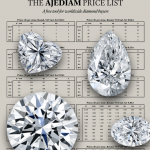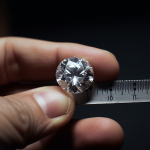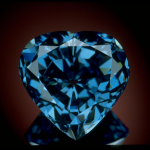Diamond Prices
Read more
Complete Story Of Man Made Lab-Grown Diamonds: From Creation To Market
All the Aspects to Consider to Be Well-Informed
In recent years, the jewelry industry has seen a notable shift with the introduction and acceptance of synthetic, man-made, cultured, or lab-grown, diamonds. These diamonds, identical to their natural counterparts in almost every aspect, offer an ethical and often more affordable alternative. They are created through two main processes: High Pressure-High Temperature (HPHT) and Chemical Vapor Deposition (CVD), each with unique machinery and diamond types produced.
- High Pressure-High Temperature Diamonds (HPHT): Creation, Machines, and Uses
- Chemical Vapor Deposition Diamonds (CVD): Creation, Machines, and Uses
- Identifying Lab-Grown Diamonds: Physical Characteristics Differentiating Them from Natural Diamonds
- Gemological Labs and Their Lab-Grown Diamond Reports
- The Value of Man-Made Diamonds
- The Sustainability Question for Synthetic and Natural Diamonds
- Transforming Trends: The Impact of Lab-Grown Diamonds on the Diamond and Jewelry Markets
High Pressure-High Temperature Diamonds (HPHT): Creation, Machines, and Uses
The HPHT Process for Diamond Growth
The HPHT method is the oldest and most commonly used process for creating synthetic diamonds. The process simulates the natural conditions that create diamonds deep within the earth, exposing carbon to high temperatures and pressures over an extended period.
The High Pressure High Temperature (HPHT) process for diamond growth begins with placing a diamond seed in a press designed specifically for this purpose. The chamber is then heated to temperatures between 1300-1600 °C under extreme pressure. A high-purity carbon source (for example iron, nickel, or cobalt) dissolves in the molten metal and precipitates on the diamond seed, initiating the growth of a synthetic diamond. Over several days to weeks, the carbon material migrates and crystallizes on the diamond seed, forming a synthetic diamond crystal. This lab-grown diamond is then cut and polished to its final form.
HPHT Machinery
There are three main types of HPHT machines: Belt press, Cubic press, and BARS apparatus.
Belt Press: This machine uses two large anvils to apply pressure to a cylindrical chamber. The sample, together with a metallic flux, is placed inside, and the temperature and pressure are increased until a diamond forms.
Cubic Press: Commonly used for industrial production, a cubic press is a large, multianvil press capable of producing the necessary levels of pressure and temperature for diamond formation.
BARS Apparatus: BARS stands for “Bridgman Anvil Russian System.” This apparatus uses a combination of a hydraulic press and electric current to create the necessary conditions. It is one of the most effective and widely used machines to produce synthetic diamonds.
The Use of HPHT Diamonds
HPHT diamonds can be made in a wide range of sizes and grades, from small, low-quality stones used in industrial applications, like cutting and drilling, to larger, high-quality stones used in jewelry. They can also produce fancy-colored diamonds, like yellow and blue, which occur when specific impurities are added during the manufacturing process.
Chemical Vapor Deposition Diamonds (CVD): Creation, Machines, and Uses
The CVD Process for Diamond Growth
The CVD process, on the other hand, involves placing diamond seed crystals in a vacuum chamber filled with a carbon-containing gas. The chamber is then heated to around 900-1200°C and a microwave beam breaks down the gas molecules, causing carbon to precipitate and deposit onto the seed crystal. This process may take several weeks, with intermittent polishing to remove non-diamond carbon. After this growth period, the synthetic diamonds are ready for cutting and polishing. Initially, these diamonds may have a brown color, which can be removed by heat treatment before faceting. The final product is a colorless, lab-grown diamond.
CVD Machinery
CVD machines differ significantly from HPHT machines. They use a chamber in which a carbon-rich gas is introduced, usually methane mixed with hydrogen. The chamber is then heated, typically using microwaves or hot filaments, to break down the gas molecules. The carbon atoms bond to a seed diamond plate, gradually building up layers of carbon to form a diamond.
The Use of CVD Diamonds
CVD diamonds are typically higher in gem quality and are most commonly used in the jewelry industry. They tend to be clear or white, making them ideal for traditional jewelry items, like engagement rings. It’s also possible to produce fancy colored diamonds with CVD, though it’s less common.
Identifying Lab-Grown Diamonds: Physical Characteristics Differentiating Them from Natural Diamonds
Lab-grown diamonds and natural diamonds are identical in most respects, including their physical and chemical properties. They both consist of carbon atoms arranged in a crystal lattice structure, which gives them their hardness and brilliance. To most people, a lab-grown diamond and a natural diamond will look identical. However, there are subtle differences that can help a gemologist differentiate between the two:
Metallic Inclusions
Inclusions are tiny imperfections within a diamond that occurred during its formation. Natural diamonds often have inclusions that were formed by intense heat and pressure over millions of years. These may include mineral traces or irregular crystal growth. Lab-grown diamonds can also have inclusions, but they are often different. For example, they might have metallic inclusions from the metal catalyst used in the HPHT process.
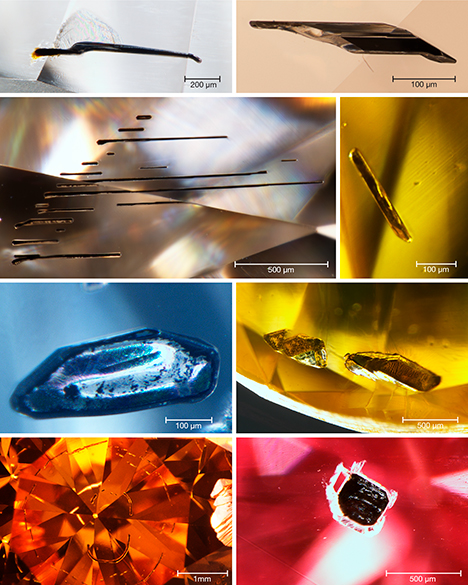
Growth Patterns
Lab-grown diamonds tend to have different growth patterns compared to natural diamonds. This is due to the different conditions under which they form. Natural diamonds form over millions of years, while lab-grown diamonds form over a matter of weeks or months. These different formation processes can result in different growth patterns that can be detected under magnification.
Fluorescence
Some lab-grown diamonds may show strong fluorescence under ultraviolet light. This is not a definitive test, as natural diamonds can also exhibit fluorescence, but it can be one more piece of evidence in the identification process.
Graining
The crystal structure of a lab-grown diamond can sometimes show a different type of graining pattern under magnification compared to a natural diamond. This is another characteristic that gemologists look for when identifying lab-grown diamonds.
Laser Inscriptions
Many lab-grown diamonds are laser inscribed on the girdle to identify them as lab-grown. This is not a natural characteristic, but it is a common practice in the industry to ensure transparency and honesty.
Color and Clarity
Lab-grown diamonds often have a higher average color and clarity grade than natural diamonds. This is because the lab environment can be carefully controlled to minimize the introduction of impurities or defects.
Gemological Labs and Their Lab-Grown Diamond Reports
Laboratory-grown diamonds have grown in popularity and their market expands, the demand for certification and validation of these lab-grown diamonds increases. Diamond certificates assure consumers and sellers alike about the quality of these synthetic diamonds. These labs utilize advanced technology and scientific methods to evaluate the properties and characteristics of lab-grown diamonds.
Amongst the many gemological laboratories here are some of the most well-known and examples of lab-grown diamond reports. Each of these labs has its own unique approach and specific offerings.
The Gemological Institute of America (GIA)
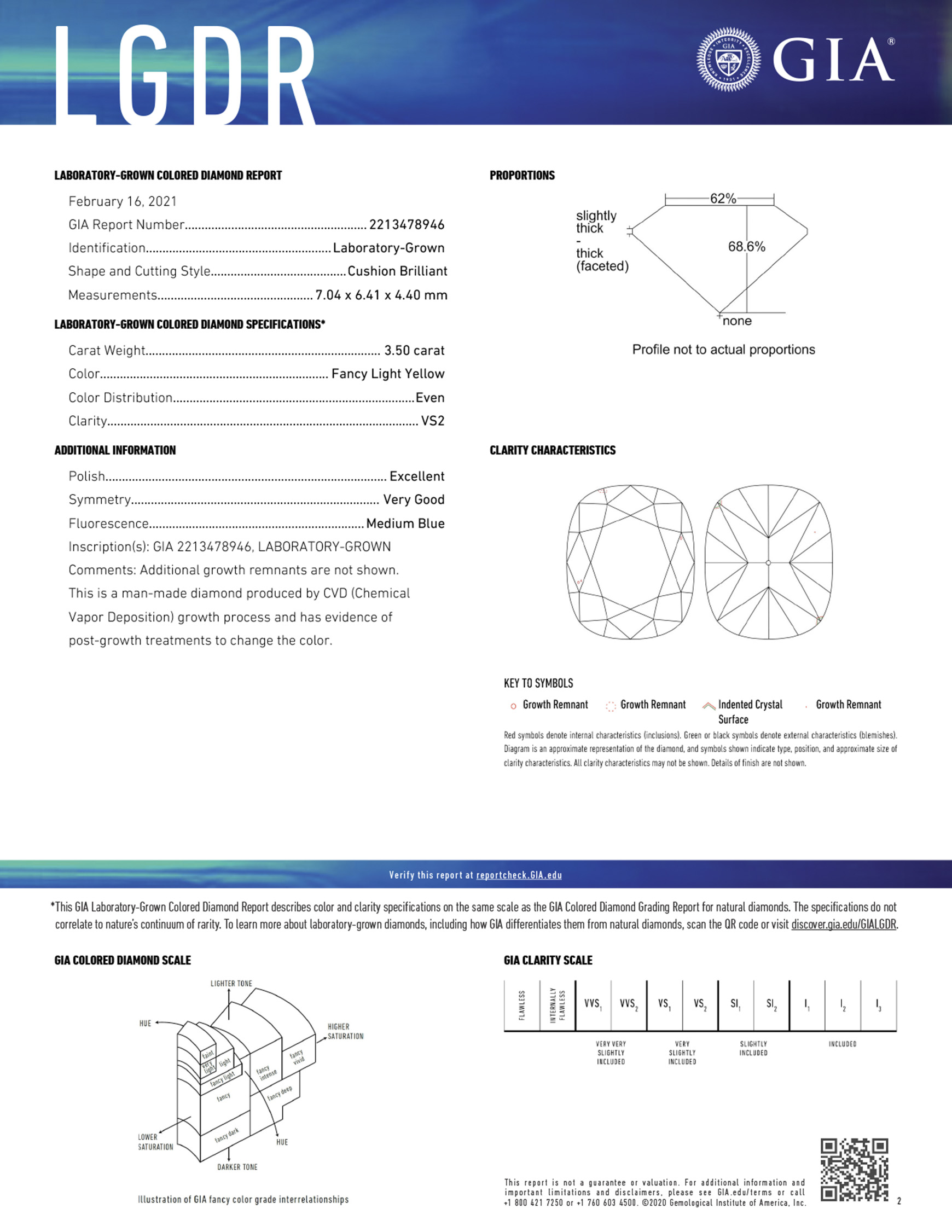
The Hoge Raad voor Diamanten (HRD Antwerp)
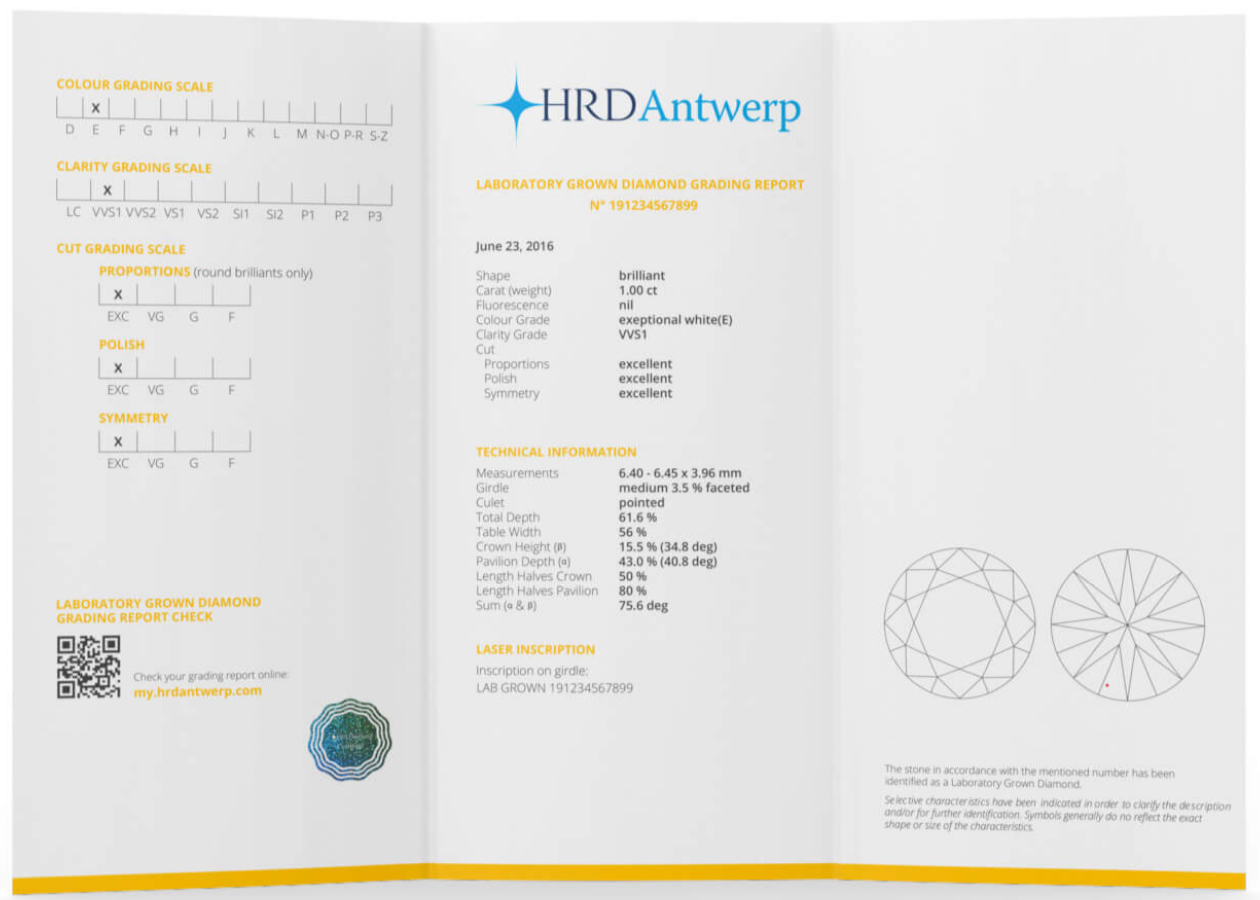
The International Gemological Institute (IGI)

The Value of Man-Made Diamonds
The production of synthetic diamonds has been revolutionized by modern technologies, allowing for their mass creation in days or weeks, depending on size. This speed and efficiency starkly contrast the exhaustive and expensive processes of mining for rare, natural diamonds.
Even though lab-grown diamonds are man-made, they still entail certain expenses. The production utilizes costly, energy-intensive machinery, and the diamonds undergo cutting, polishing, and certification by renowned gem labs to ensure their quality. All these factors contribute to their price.
The actual costs of lab-grown diamonds are significantly lower than those of natural diamonds. Despite this, some brands mark up prices in a way that can be misleading. To assist consumers, an average market price list is provided, offering a benchmark for understanding the pricing of lab-grown diamonds.
Note that in lab-grown diamond jewelry, the goldsmithing work often constitutes an equal to greater part of the cost than the synthetic diamonds. Unlike natural diamonds, cultured diamonds generally don’t hold a significant resale value on their own, but their gold settings do. The value of synthetic diamond jewelry may be enhanced by the reputation of the designer. However, this should be considered more in line with high-end fashion than with diamond and fine jewelry value.
To help our visitors navigate the prices of synthetic diamonds, Ajediam has published a price list of average market prices for lab-grown diamonds, visit our synthetic diamond price list page
The Sustainability Question for Synthetic and Natural Diamonds
When it comes to the sustainability of synthetic diamonds versus natural diamonds, the answer isn’t quite black and white. A prevalent belief suggests that lab-grown diamonds offer a more ethical choice compared to their mined counterparts. However, it’s crucial to acknowledge that the natural diamond industry plays a significant role in bolstering the economies of many countries, creating jobs and income for a broad range of societal segments.
Regrettably, many brands may mislead consumers by asserting that synthetic diamonds represent a “green” alternative to natural diamonds. Such a claim is not entirely accurate. The manufacturing process for lab-grown diamonds is energy-intensive. Furthermore, a majority of them are produced in countries that predominantly rely on non-renewable energy sources. Although the production of synthetic diamonds is energy-intensive, it is generally more eco-friendly compared to the processes involved in diamond mining. With considerations for both socio-economic and environmental factors, the choice between synthetic and natural diamonds ultimately depends on individual preference.
Transforming Trends: The Impact of Lab-Grown Diamonds on the Diamond and Jewelry Markets
The introduction of lab-grown diamonds into the market was initially met with little concern by diamond industry professionals. Early versions of these synthetic diamonds were not of high quality and were priced too high to pose a real threat to the natural diamond industry.
As the technology improved, lab-grown diamonds’ quality and appearance excelled, while becoming significantly more affordable. This development sparked a wave of near hysteria in the diamond market a few years ago, reminiscent of the disruption that cultured pearls brought to the natural pearl market.
Contrary to fears of lab-grown diamonds decimating the natural diamond market, a new niche within the diamond industry has emerged. This niche caters to two types of customers: those who previously could not afford the engagement diamond of their dreams and those who like to consume diamonds like luxury fashion items, more frequently.
Despite this shift, the natural diamond industry remains robust. The integration of lab-grown diamonds into the market seems to have led to the expansion and diversification of the diamond and jewelry markets. Instead of wiping out the existing market, lab-grown diamonds have carved out their own place in the industry. From what we see at Ajediam, it caters to a different set of consumers and contributes to the overall growth of the sector. The market for Lab-Grown diamonds is still at its earliest stage, it will be interesting to see how it evolves over the next decades.
